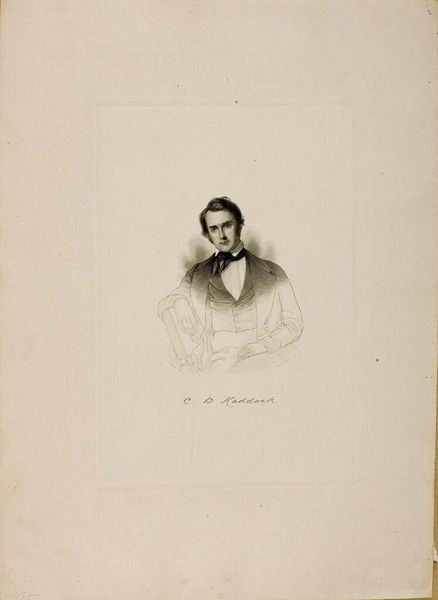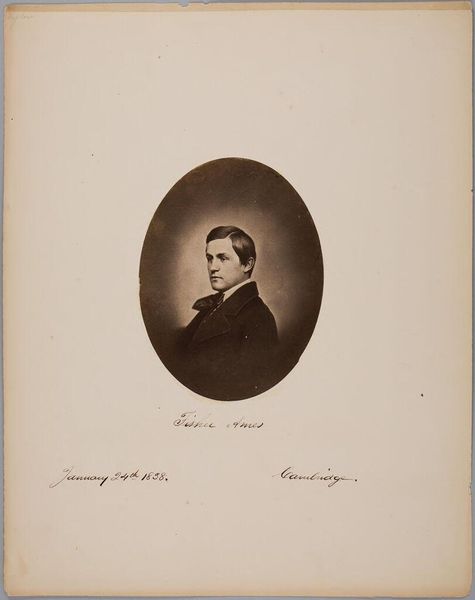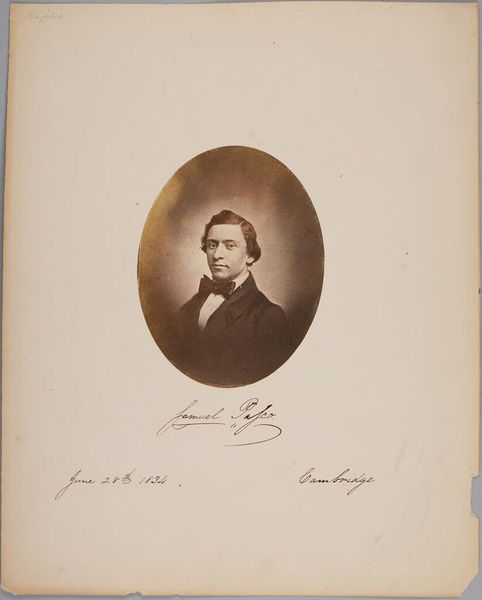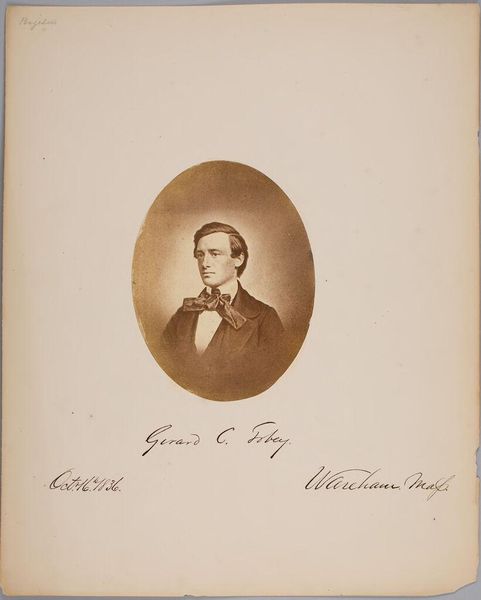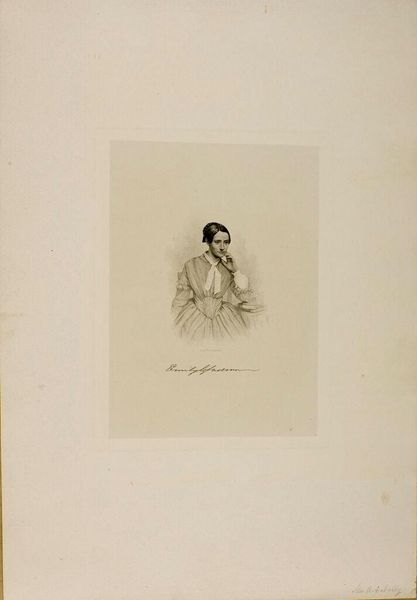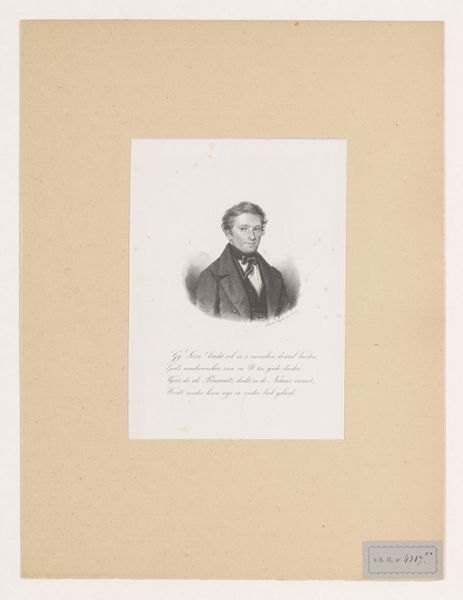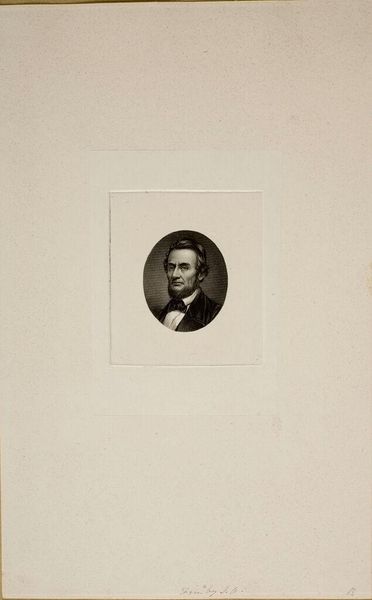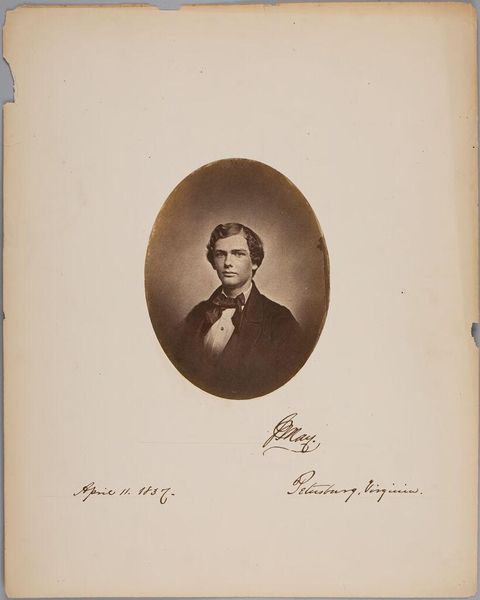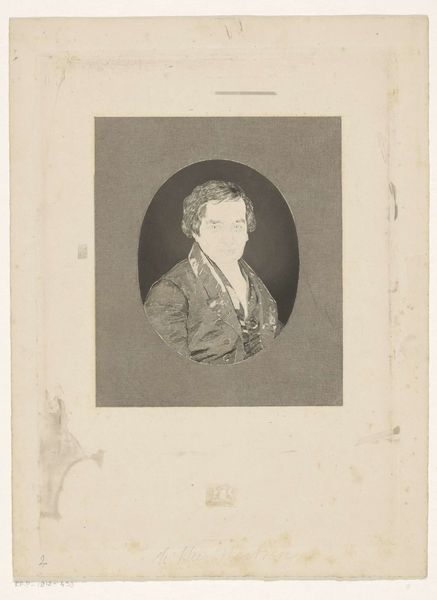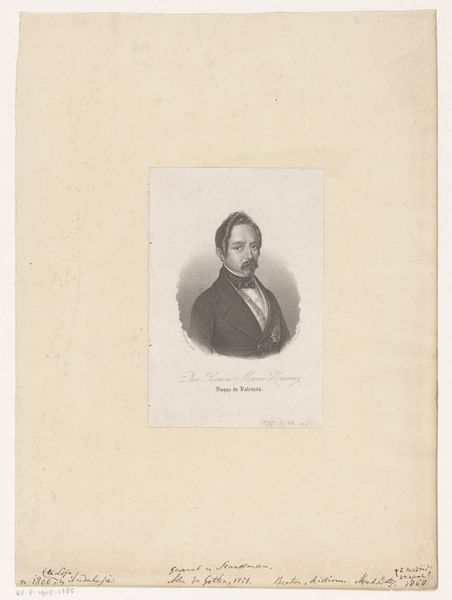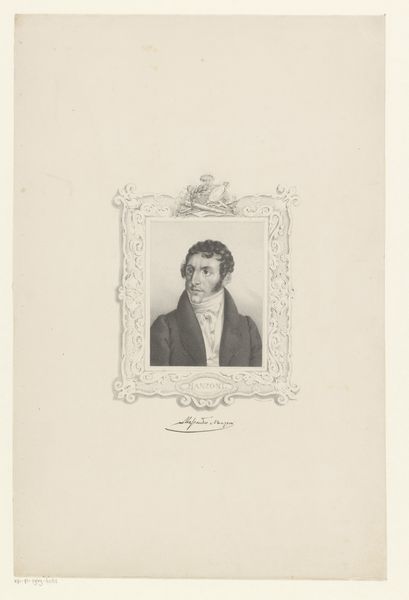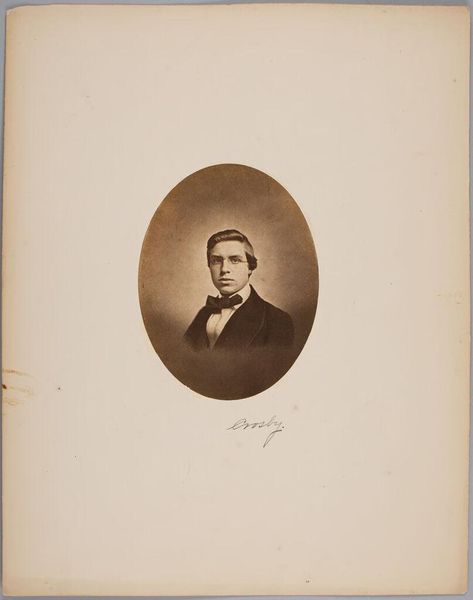
Copyright: CC0 1.0
Curator: This is Joseph Andrews' portrait of William B. Tappan, currently residing in the Harvard Art Museums. It really strikes me as a portrait of bourgeois masculinity during the 19th century. Editor: Yes, the lithographic process lends itself well to conveying the subtle textures of his clothing and hair, creating a sense of respectability, while the softness of the medium might reflect a level of comfort and affluence. Curator: I agree, but it also represents a particular intersection of power, race, and gender. Andrews made multiple lithographic portraits of abolitionists like Tappan, and this image contributes to a visual narrative of social and moral authority within that movement. Editor: That's insightful. Looking closer, the precise control of the lithographic stone really allowed for this nuanced representation of class. It is interesting to consider the labor involved, both of the artist and the printers. Curator: Exactly, and how that labor contributes to the circulation of these ideas about moral authority and social reform. Editor: Well, I'm happy we could unpack the layers embedded in this modest portrait. Curator: Me too, it is always enlightening to look at art through a different lens.
Comments
No comments
Be the first to comment and join the conversation on the ultimate creative platform.
